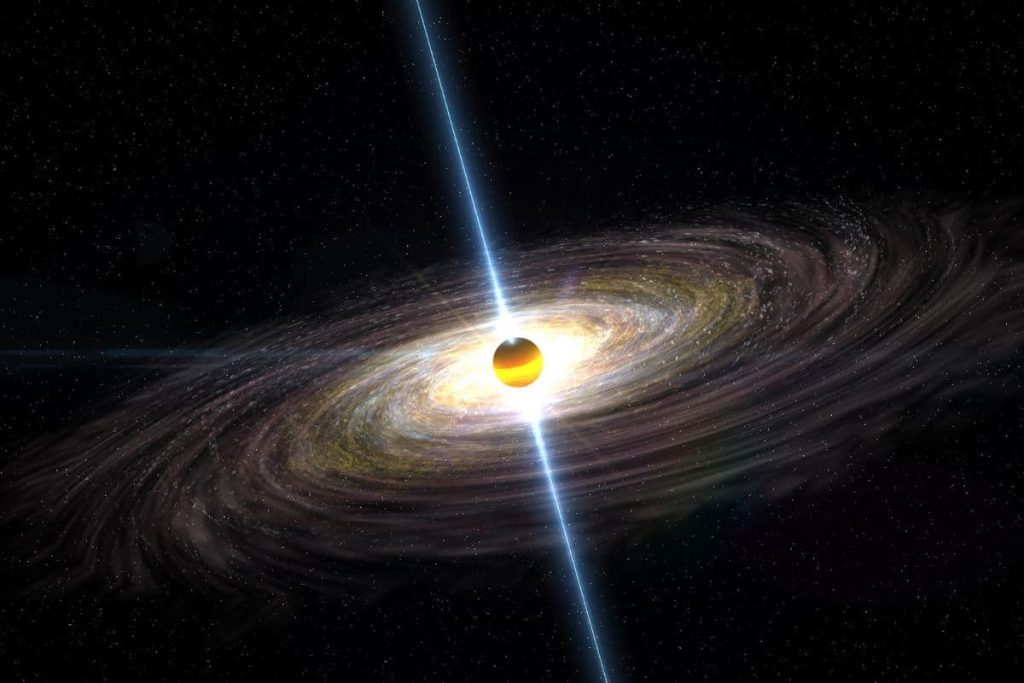Scientists Just Found a Black Hole That’s Eating the Universe – The Daily Galaxy –Great Discoveries Channel

Astronomers have spotted a black hole that’s devouring matter at an impossible speed—40 times faster than science thought possible. This cosmic monster is rewriting the rules of black hole growth, and its discovery could change everything we know about the early universe. But how is it pulling this off?A supermassive black hole in the early universe is consuming material at an unprecedented rate, challenging long-standing astrophysical theories. Located in the center of the galaxy LID-568, this black hole is seen just 1.5 billion years after the Big Bang, growing at more than 40 times the Eddington limit—a theoretical threshold that dictates how fast black holes should be able to feed.The Eddington limit is a key concept in black hole accretion theory. When it consumes matter, the material doesn’t fall directly in but forms an accretion disk, swirling around the event horizon. At a certain point, this radiation pressure is strong enough to counteract further accretion, effectively capping how fast a black hole can grow.Yet, the black hole in LID-568 is defying this limit, consuming matter so rapidly that it is glowing with far more energy than expected for its size. The JWST’s NIRSpec instrument, along with observations from Chandra X-ray Observatory, helped astronomers confirm this extreme behavior.One of the biggest puzzles in astrophysics is how supermassive black holes—millions to billions of times the mass of the Sun—formed so quickly in the early universe. Conventional theories suggest black holes grow slowly by accreting matter at or below the Eddington limit. However, discoveries like LID-568 suggest that some of them may experience bursts of extreme feeding, known as super-Eddington accretion.This discovery supports the idea that some early black holes grew rapidly by consuming vast amounts of matter in short-lived, intense episodes. It also lends weight to the hypothesis that the first supermassive black holes did not originate from ordinary collapsing stars. The chance to observe them in the middle of such an extreme feeding event is incredibly rare. Hyewon Suh, the lead researcher from Gemini Observatory and NSF’s NOIRLab, and her team were fortunate to catch LID-568 at just the right moment. Given how brief super-Eddington accretion phases are expected to be, most black holes that went through such rapid growth spurts in the past are no longer behaving this way. That’s why LID-568 is now a prime target for future observations.This discovery suggests that super-Eddington accretion could be a key mechanism in the formation of the universe’s first and largest black holes. If black holes can experience brief but extreme feeding periods, then their rapid early growth becomes much easier to explain.Future JWST observations and next-generation telescopes could uncover more black holes in similar extreme growth phases, helping scientists refine models of how black holes and galaxies evolved together in the early cosmos.Comment Save my name, email, and website in this browser for the next time I comment.
© 2024 | Daily Galaxy | All rights reserved
Source: https://dailygalaxy.com/2025/02/black-hole-eating-universe/





